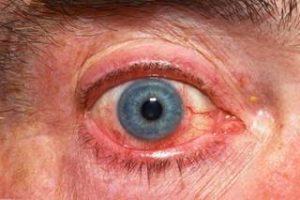- Home
- Editorial
- News
- Practice Guidelines
- Anesthesiology Guidelines
- Cancer Guidelines
- Cardiac Sciences Guidelines
- Critical Care Guidelines
- Dentistry Guidelines
- Dermatology Guidelines
- Diabetes and Endo Guidelines
- Diagnostics Guidelines
- ENT Guidelines
- Featured Practice Guidelines
- Gastroenterology Guidelines
- Geriatrics Guidelines
- Medicine Guidelines
- Nephrology Guidelines
- Neurosciences Guidelines
- Obs and Gynae Guidelines
- Ophthalmology Guidelines
- Orthopaedics Guidelines
- Paediatrics Guidelines
- Psychiatry Guidelines
- Pulmonology Guidelines
- Radiology Guidelines
- Surgery Guidelines
- Urology Guidelines
Master molecule behind corneal inflammation identified

One of the symptoms of herpes simplex virus-1 infection of the eye is lingering inflammation of the cornea the clear outer layer of the eyeball. But without blood vessels, it has long puzzled researchers how this tissue becomes inflamed after trauma or infection. For an inflammatory response to occur, immune cells need to be present, and these cells travel throughout the body in blood.
Now, researchers at the University of Illinois at Chicago have identified an enzyme present in the cornea that becomes dramatically upregulated and triggers inflammation during and even after a herpes virus infection has cleared. Their results are published in the journal Cell Reports.
The herpes simplex virus-1, or HSV-1, is transmitted through body fluids and infects the mouth and eyes, and is one of the leading causes of blindness. It can be eliminated in the eye using antiviral drugs, but inflammation of the cornea -- the clear outer layer of the eyeball -- can persist indefinitely, requiring ongoing treatment with steroid-based eye drops.
"We wanted to know why there is still inflammation even after the virus is gone from the eye," said Deepak Shukla, the Marion Schenk Professor of Ophthalmology and professor of microbiology and immunology in the UIC College of Medicine. "We thought that there must be a factor or molecule already in the eye that the virus influences in some way, and that molecule helps tip the balance in the cornea towards inflammation."
Shukla and colleagues looked at human corneal cells infected with HSV-1 and saw that an enzyme called heparanase became significantly upregulated and activated in cells just after infection, and remained upregulated well after the initial infection.
"The active form of heparanase was clearly involved in promoting and sustaining inflammation in the cornea through multiple channels," said Alex Agelidis, a graduate student in the UIC College of Medicine and a co-investigator on the study.
Heparanase is an enzyme that exists normally in cells throughout the body and in the cornea in low levels. In its active form, it functions to regulate levels of heparan sulfate, a kind of generic cell membrane receptor. "Lots of things bind to heparan sulfate to trigger various cellular responses, but when active heparanase levels are high, the receptors become degraded, so bound molecules are released and can cause damage to the local tissues," said Agelidis.
In the cornea, when active heparanase levels are high, certain molecules that would normally bind to haparan sulfate instead damage junctions between cells, making tissues leaky and permeable to blood and accessible to immune cells. "We think this is one of the ways that increased levels of heparanase promote inflammation in the cornea," said Shukla.
Another way heparanase promotes inflammation is through the production of pro-inflammatory molecules in corneal cells. "When levels of active heparanase reach a critical point, the enzyme enters the cell nucleus where it stimulates the production of pro-inflammatory cytokines," said Agelidis.
In mice where the researchers induced elevated levels of heparanase in their corneas, small lesions of the cornea grew larger and did not heal. When they applied a heparanase blocker to similar lesions produced in cell and tissue culture, they healed quickly and completely. "This inability to heal small lesions may be another way that HSV-1 spreads throughout the cornea," said Shukla.
Heparanase may be a key factor in other inflammatory disorders, including dry eye disease, Shukla explained. "A drug that blocks heparanase may represent a novel treatment for long-term inflammation associated with HSV-1 infection as well as other inflammatory disorders of the eye,"

Disclaimer: This site is primarily intended for healthcare professionals. Any content/information on this website does not replace the advice of medical and/or health professionals and should not be construed as medical/diagnostic advice/endorsement or prescription. Use of this site is subject to our terms of use, privacy policy, advertisement policy. © 2020 Minerva Medical Treatment Pvt Ltd